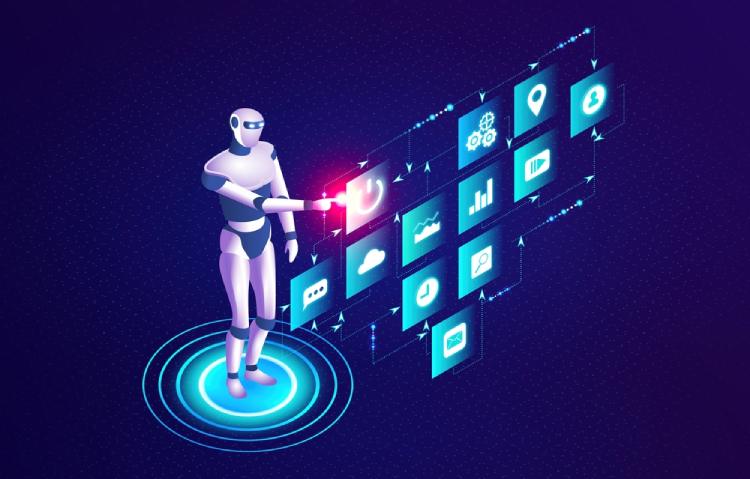Hyper automation is the use of automation to optimise workflows using a variety of different technologies, including artificial intelligence (AI), robotic process automation (RPA), digital process automation (DPA), machine learning (ML), Decision management systems and integration-platform-as-a-service (IPaaS) solutions.
“In many respects, it’s an acknowledgement that the first basic vision of surface automation is unsuitable for most real-world jobs,” says Sean Chou, co-founder and CEO of Catalytic. In light of the reality that real-world operations are rarely cleanly grouped into RPA, DPA, or IPaaS, and all could use a healthy dose of AI, hyper-automation is the inevitable convergence of many categories.
By enhancing current procedures, hyper-automation, in Chou’s opinion, enables staff to collaborate with technology. Additionally, it propels digital techniques that offer benefits beyond the time reductions offered by conventional forms of automation. Employees are free to concentrate on the aspects of their jobs they are enthusiastic about, such as strategy or people management. At the same time, technology handles the time-consuming administrative tasks of a role. Hyper-automation changes how we work and increases productivity, but it also makes people happier and more engaged at work.
Benefits of Hyper-Automation
Workforce enablement: With the resources available, employees may automate various procedures related to their profession and complete more tasks more quickly. By reducing physical tasks, they can concentrate on more essential duties, such as planning and strategy.
Employee upskilling: Since automation is no longer entirely dependent on IT, any business user can take the lead in automating their department, benefiting both tech-savvy and non-technical staff members.
Systems integration: With the help of integrations, Hyper-Automation enables smooth communication between a company’s cutting-edge technology and data systems.
Digital agility: The firm will surpass the one-off benefits of a single technology to a state of actual digital skill and versatility at scale when all automation modes are intimately integrated.
Return On Investment: Using critical data, businesses can track the precise ROI generated from automated procedures, improved operations, and time and money savings on a weekly, monthly, and annual basis. End-to-end process automation: Automation by itself is capable of finishing straightforward tasks. Processes in their entirety that involve both structured and unstructured data might be the focus of intelligent automation.
The Impact of Hyper Automation Across Industries
Thanks to tools like RPA, machine learning, and artificial intelligence, subject matter expertise are no longer necessary for complex business processes. Fundamental digital transformation can be achieved through hyper-automation. The Hyper Automation Process has significantly impacted sizable demography throughout a wide range of businesses. Here are a few instances to support it:
1. Telecommunication — Automate Common Customer Requests
Many letters received from telecom consumers are repetitious and frequently merely ask for little changes to their plans. Typical requests include changing your address, deleting a line from your service plan, and paying your bill. These seemingly minor requests might take a lot of time.
The intent of an incoming message from a client can be scanned and ascertained using intelligent process automation. And natural language processors (NLPs). Depending on the message’s content, it generates an automated response, automatically adjusts the client’s current plan, or directs the message to the proper department.
2. Demand Forecast in the Logistics and Supply Chain
Logistics businesses gather many data points—such as the typical time it takes to build a product, how long customers typically wait for service, and how much inventory is produced—underutilised.
This industry’s use case for intelligent process automation involves using such data. To forecast consumer wants, which logistics companies can utilise to streamline their processes and keep up with changing customer needs.
3. High Tech — Churn Prediction
The price structure many technological companies use is subscription-based, which allows clients more freedom and facilitates subscription cancellation. Intelligent process automation can increase customer retention. By warning tech sales representatives of their customers’ churn risk before they discontinue their service.
Technology businesses can implement an intelligent process automation use case for churn prediction. Platforms for intelligent process automation scan client behaviour for risk factors. Notify sales or service professionals of the possibility of churn and offer suggestions for keeping that customer.
Conclusion
People in IT or people generally have the misconception that automation procedures harm human occupations by removing resources. Hyper-Automation will place more of an emphasis on value-based roles rather than eliminating human resource positions. Data analytics service providers know how machine learning keeps organisations one step ahead of their rivals. Machine learning algorithms are more effective at spotting data trends and patterns and creating scenarios.
This technology has the potential to boost output, save time, and cut expenses. It also simplifies Automated services by removing any potential for human error. Law firms, insurance companies, distant sales offices, pharmaceutical companies conducting clinical trials, healthcare organisations, leading content management solutions, and any other company that processes. Many forms daily can benefit significantly from the programme.
Also read: Payroll Software for Small Businesses
Also read: WEBSITE PERSONALIZATION



